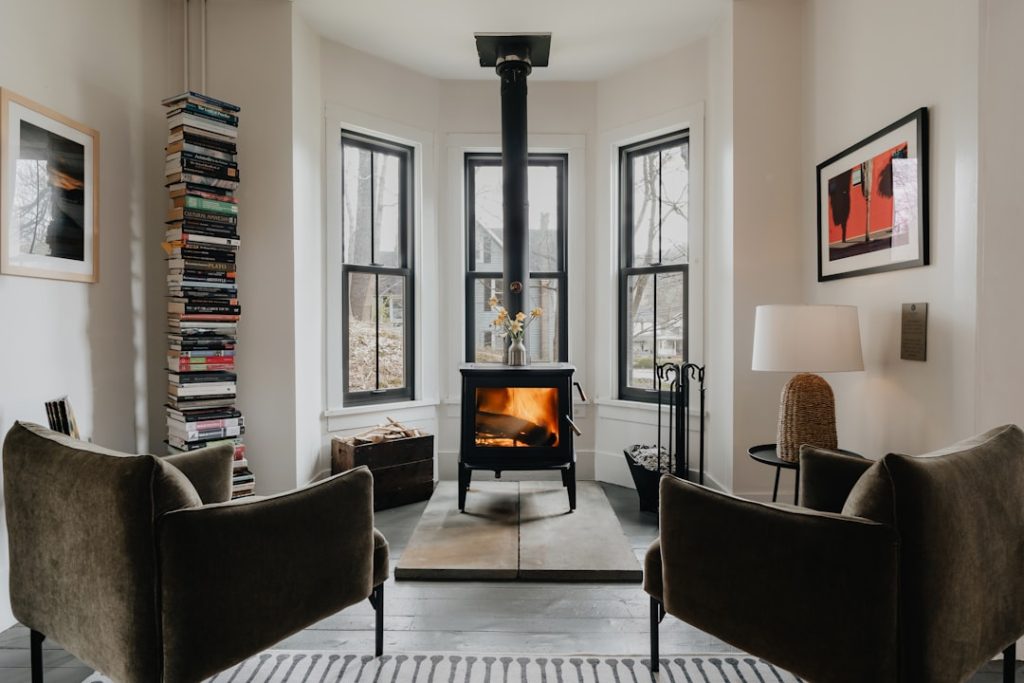Chickens have specific requirements for optimal health and well-being, particularly during winter. These include:
1. A warm, dry environment to shield them from cold and damp conditions.
2. Access to fresh water to prevent dehydration. 3.
A nutritious diet to maintain body temperature and energy levels. 4. Protection from drafts and wind to reduce stress and illness.
Chickens are more susceptible to cold temperatures than mammals due to their limited ability to regulate body temperature. To address this, they need:
1. An insulated, draft-free shelter.
2. Constant access to fresh water. 3.
A nutrient-rich diet to support energy production and warmth. Meeting these needs helps chickens remain healthy and comfortable throughout the winter months. Proper care during this season is essential for maintaining the overall health and productivity of the flock.
Table of Contents
- 1 Providing proper shelter for chickens
- 2 Using heat lamps and heaters
- 3 Insulating the chicken coop
- 4 Adding extra bedding for warmth
- 5 Providing a warm and nutritious diet
- 6 Monitoring and adjusting for temperature changes
- 7 FAQs
- 7.1 What are some ideas to keep chickens warm in winter?
- 7.2 How can I insulate my chicken coop for winter?
- 7.3 Is it safe to use heat lamps or heated pads for chickens in winter?
- 7.4 What type of bedding is best for keeping chickens warm in winter?
- 7.5 How can I ensure good ventilation in the chicken coop while keeping it warm in winter?
Key Takeaways
- Chickens need extra care in winter due to their susceptibility to cold temperatures
- Proper shelter should be provided to protect chickens from harsh weather conditions
- Heat lamps and heaters can be used to maintain a warm environment in the coop
- Insulating the chicken coop helps in retaining heat and keeping the chickens warm
- Adding extra bedding such as straw or wood shavings provides insulation and warmth for the chickens
- A warm and nutritious diet is essential for chickens to maintain their body temperature in winter
- Regular monitoring and adjustments should be made to ensure the coop remains at a suitable temperature for the chickens
Providing proper shelter for chickens
Key Elements of a Well-Built Coop
A well-built and insulated chicken coop is essential for protecting your flock from the cold and damp conditions of winter. The coop should be free from drafts and leaks, and should provide adequate ventilation to prevent the buildup of moisture. Additionally, the coop should be spacious enough to allow the chickens to move around comfortably, but not so large that it becomes difficult to heat.
Insulation and Draft-Proofing
When it comes to providing shelter for chickens in winter, there are a few key factors to consider. First and foremost, the coop should be well-insulated to help retain heat and keep out drafts. This can be achieved by using materials such as straw, hay, or foam insulation to line the walls and ceiling of the coop.
Ventilation and Moisture Prevention
Additionally, it’s important to ensure that the coop is free from leaks and drafts, as these can lead to cold and damp conditions that can be harmful to the chickens’ health. Finally, the coop should provide adequate ventilation to prevent the buildup of moisture, which can lead to respiratory issues in chickens.
The Importance of Proper Shelter
By providing proper shelter for your flock, you can help them stay warm and comfortable throughout the winter. By considering these key factors, you can create a safe and healthy environment for your chickens to thrive in, even in the coldest of winter months.
Using heat lamps and heaters

In some cases, providing proper shelter may not be enough to keep chickens warm in winter, especially in extremely cold climates. In these situations, heat lamps or heaters can be used to provide additional warmth inside the chicken coop. Heat lamps are a popular option for providing supplemental heat, as they are relatively inexpensive and easy to install.
However, it’s important to use caution when using heat lamps, as they can pose a fire hazard if not used properly. Heaters are another option for providing warmth in the chicken coop, but they tend to be more expensive and may require professional installation. By using heat lamps or heaters, you can help ensure that your chickens stay warm and comfortable throughout the winter.
When using heat lamps or heaters in the chicken coop, it’s important to take certain precautions to ensure the safety of your flock. First and foremost, it’s essential to follow the manufacturer’s instructions for installation and use of the heat source. This may include using a secure mounting system for heat lamps and ensuring that heaters are placed in a safe location away from flammable materials.
Additionally, it’s important to regularly inspect and maintain heat sources to ensure that they are functioning properly and pose no risk to the chickens or the coop. By using heat lamps or heaters responsibly, you can provide your chickens with the warmth they need to stay healthy in winter.
Insulating the chicken coop
Insulating the chicken coop is an important step in providing proper shelter for chickens in winter. Insulation helps retain heat and keep out drafts, creating a warm and comfortable environment for the flock. There are several options for insulating a chicken coop, including using materials such as straw, hay, or foam insulation to line the walls and ceiling.
Additionally, it’s important to seal any gaps or cracks in the coop to prevent drafts from entering. By insulating the chicken coop, you can help ensure that your flock stays warm and healthy throughout the winter months. When insulating a chicken coop, it’s important to consider the specific needs of your flock and the climate in which you live.
Different materials may be more or less effective depending on factors such as temperature, humidity, and wind conditions. Additionally, it’s important to ensure that insulation materials are safe for chickens and do not pose a risk of ingestion or injury. By carefully selecting and installing insulation materials, you can create a cozy and comfortable environment for your flock to thrive in during the winter.
Adding extra bedding for warmth
In addition to insulating the chicken coop, adding extra bedding can help provide warmth and comfort for chickens in winter. Bedding materials such as straw, hay, or wood shavings can help create a cozy environment for the flock by providing insulation from the cold floor of the coop. Additionally, bedding materials can help absorb moisture and odors, creating a cleaner and healthier living space for the chickens.
By adding extra bedding to the coop, you can help ensure that your flock stays warm and comfortable throughout the winter months. When adding extra bedding to the chicken coop, it’s important to consider factors such as cleanliness, safety, and comfort for the chickens. Bedding materials should be clean and free from mold or pests, as these can pose health risks to the flock.
Additionally, it’s important to regularly clean and replace bedding to prevent the buildup of waste and moisture. By providing a clean and comfortable bedding environment for your flock, you can help ensure that they stay warm and healthy throughout the winter.
Providing a warm and nutritious diet

Providing a Balanced Diet
Additionally, it’s important to ensure that chickens have access to a balanced diet that includes essential nutrients such as vitamins and minerals. By providing a warm and nutritious diet, you can help ensure that your flock stays healthy and energetic throughout the winter months.
Considering Dietary Requirements
When providing a warm and nutritious diet for chickens in winter, it’s important to consider factors such as dietary requirements, portion sizes, and feeding schedules. Different breeds of chickens may have different dietary needs, so it’s important to research and understand the specific requirements of your flock.
Monitoring and Adjusting
Additionally, it’s important to monitor food consumption and adjust portion sizes as needed to ensure that all chickens have access to an adequate amount of food. By providing a warm and nutritious diet tailored to the needs of your flock, you can help ensure that they have the energy they need to stay warm and healthy throughout the winter.
Monitoring and adjusting for temperature changes
Finally, it’s important to monitor temperature changes in the chicken coop and make adjustments as needed to ensure that your flock stays warm and comfortable throughout the winter. This may involve regularly checking thermometers inside the coop to monitor temperature levels, as well as observing the behavior of the chickens for signs of discomfort or stress. If temperatures drop significantly, you may need to make adjustments such as adding extra bedding or increasing the use of heat lamps or heaters.
By monitoring temperature changes and making adjustments as needed, you can help ensure that your flock stays healthy and happy throughout the winter months. When monitoring temperature changes in the chicken coop, it’s important to consider factors such as outdoor weather conditions, humidity levels, and ventilation within the coop. These factors can all affect temperature levels inside the coop and may require adjustments to maintain a comfortable environment for the flock.
Additionally, it’s important to observe the behavior of the chickens for signs of discomfort or illness, as these may indicate that adjustments are needed. By staying vigilant and making adjustments as needed, you can help ensure that your flock stays warm and healthy throughout the winter. In conclusion, caring for chickens in winter requires careful attention to their specific needs for warmth, shelter, nutrition, and comfort.
By understanding these needs and taking proactive measures such as providing proper shelter, using heat lamps or heaters when necessary, insulating the coop, adding extra bedding for warmth, providing a warm and nutritious diet, and monitoring temperature changes, you can help ensure that your flock stays healthy and comfortable throughout the winter months. With proper care and attention, your chickens can thrive even in cold weather conditions.
If you’re looking for ideas to keep your chickens warm in winter, you may also be interested in learning how to turn a shed into a chicken coop. This article from Poultry Wizard provides helpful tips and guidance on transforming a shed into a cozy and insulated space for your feathered friends. Check it out here for more information on creating a comfortable and secure environment for your chickens during the colder months.
FAQs
What are some ideas to keep chickens warm in winter?
Some ideas to keep chickens warm in winter include providing a well-insulated coop, using heat lamps or heated pads, providing extra bedding, and ensuring good ventilation while avoiding drafts.
How can I insulate my chicken coop for winter?
You can insulate your chicken coop for winter by adding insulation to the walls, ceiling, and floor, sealing any drafts, and using thick curtains or blankets to cover windows and vents.
Is it safe to use heat lamps or heated pads for chickens in winter?
It can be safe to use heat lamps or heated pads for chickens in winter, but it’s important to follow safety guidelines to prevent fires and ensure the chickens can’t come into direct contact with the heat source.
What type of bedding is best for keeping chickens warm in winter?
Bedding materials such as straw, hay, or wood shavings can provide insulation and warmth for chickens in winter. It’s important to regularly clean and replace the bedding to maintain a dry and comfortable environment.
How can I ensure good ventilation in the chicken coop while keeping it warm in winter?
You can ensure good ventilation in the chicken coop while keeping it warm in winter by providing adjustable vents, using a ridge vent or cupola, and avoiding tight sealing that could lead to moisture buildup and poor air quality.
Meet Walter, the feathered-friend fanatic of Florida! Nestled in the sunshine state, Walter struts through life with his feathered companions, clucking his way to happiness. With a coop that’s fancier than a five-star hotel, he’s the Don Juan of the chicken world. When he’s not teaching his hens to do the cha-cha, you’ll find him in a heated debate with his prized rooster, Sir Clucks-a-Lot. Walter’s poultry passion is no yolk; he’s the sunny-side-up guy you never knew you needed in your flock of friends!







